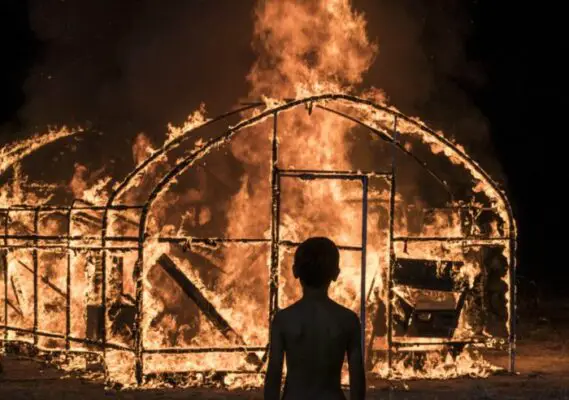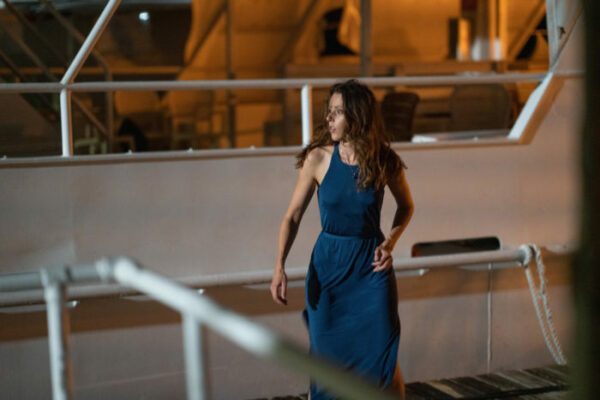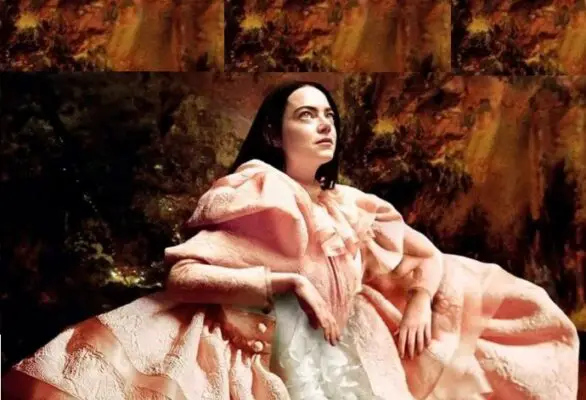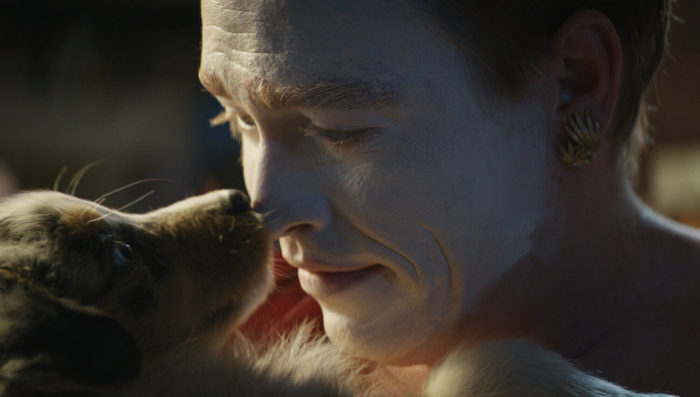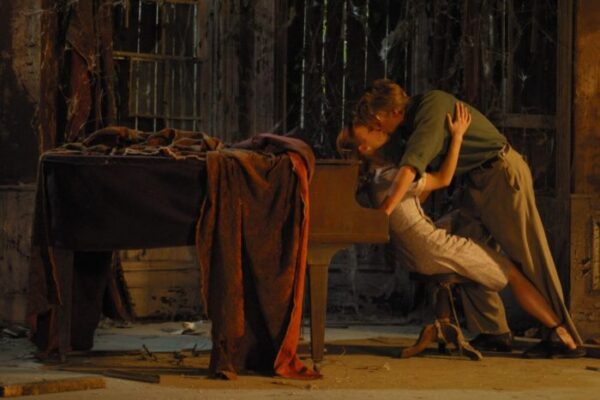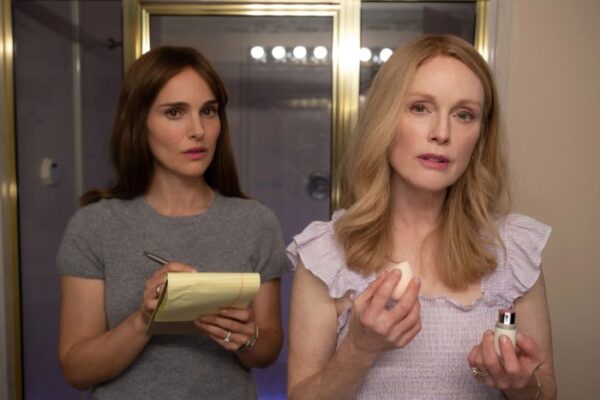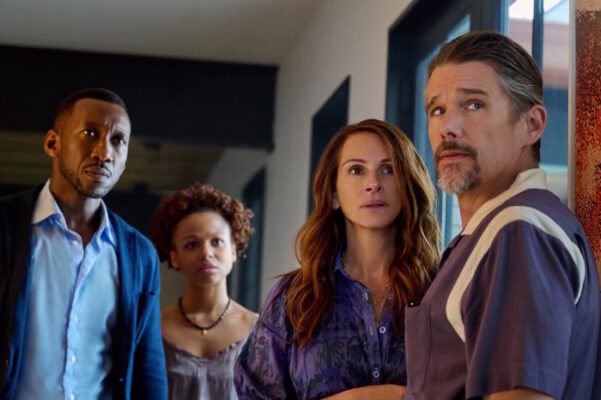The meaning of the film The Fountain
Darren Aronofsky’s “The Fountain” runs for only 96 minutes, but after watching most of the viewers it seems that they have watched a two- or three-hour film – the film is so rich in action and meaning. Everything was mixed up in this gloomy, sublime tape – Buddhist philosophy and myths of the Maya Indians, inquisitiveness of the Western mind and religious obscurantism, and in the center was a love story – either tragic or happy … “Causes either insane delight, or a sharp rejection – however, the latter usually arises from a misunderstood meaning. What is the meaning of the movie “Fountain”? It is difficult to answer this question not only in a nutshell, but also in more than a thousand words – but still I will try.
What is the essence of the film “The Fountain” in a nutshell
The key theme of the film is death and immortality. Or rather, the perception of death and the attitude towards it. Aronofsky puts forward two main models of attitudes towards life and death – they can be conditionally called Eastern and Western. The Western model is individualistic, the issue of eternal life can be considered here only within the framework of the existence of one person. The Eastern model treats life and immortality much more broadly, life here is perceived as a continuous flow, the transfusion of energy from one living organism to another. In the film, the opposition of these points of view is shown on the example of the internal struggle of one person – Thomas Creo.
Tom Creo’s position is most fully manifested at the funeral of his wife Izzy: “Death is a disease,” he declares. Tom dreams of finding a cure for death, achieving eternal life, which he wants to give to his wife, but does not have time – the tumor is progressing too quickly. In the struggle for Izzy’s life, Tom is missing an important discovery that doctors made in the laboratory under his leadership – the miraculous properties of a tree from South America. Izzy herself, on the contrary, calmly refers to death and speaks about it without fear, she wants to convey this attitude to Tom, but her impassive words about her imminent death cause only impotent rage and despair.
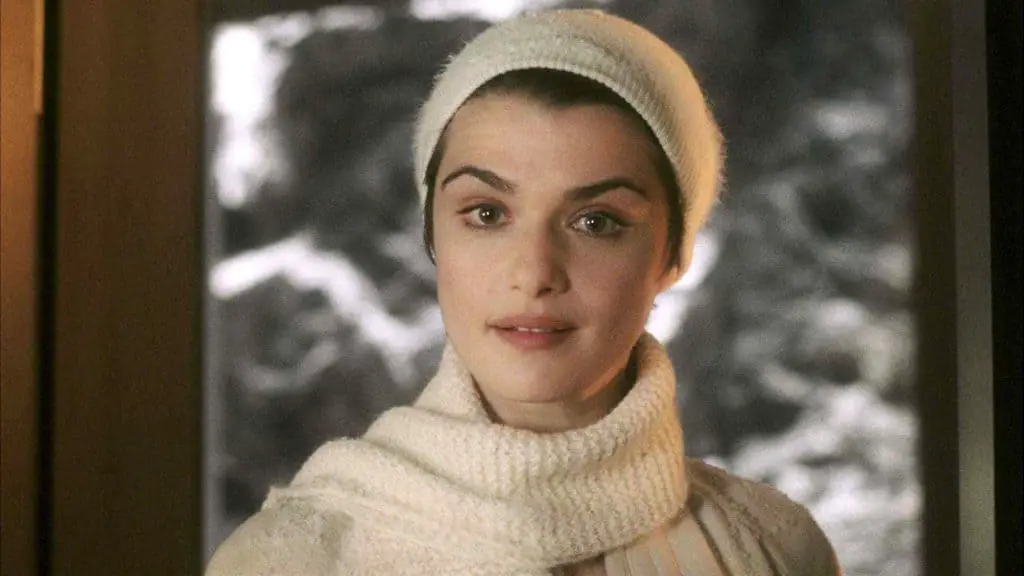
Izzy tries to convey to Tom her understanding of the cycle of life and death.
Only thanks to the book, which Izzy began to write shortly before her death, Tom begins to rethink his attitude to life and death. The plot of the manuscript entitled “The Fountain” takes Tom into another reality, where his hunt for immortality is metaphorically described. Through the narrative of Izzy, Tom comes to understand that life is not closed within the framework of the existence of one individual. Paradoxical as it may seem, in order to become immortal, you need to completely devalue your life, let it go – this sounds strange only within the framework of the Western paradigm, but for an Eastern person there are no contradictions here. Realizing this, as well as the fact that the continuation of life is impossible without death (speaking in terms of harsh reality, some organisms, decomposing and being processed, give life to others), that death is absolutely natural, Tom finally acquires the right to immortality.
The “fountain” shows that true immortality is possible, but it cannot be individual. Researcher Tom Creo tries to save his beloved wife – and fails. Tom the conquistador wants to be healed of the wound inflicted by the Indian – and dies. Real immortality is possible thanks, firstly, to the dedication of oneself to a certain higher goal (for Tom Creo, this is the development of a medicine obtained from a South American tree, for Izzy – the book “Fountain”, for the enlightened Tom – the rebirth of all mankind), and secondly, paradoxically, death. When we die, we turn into a building material for new organisms – this is what sustains endless life on our planet.
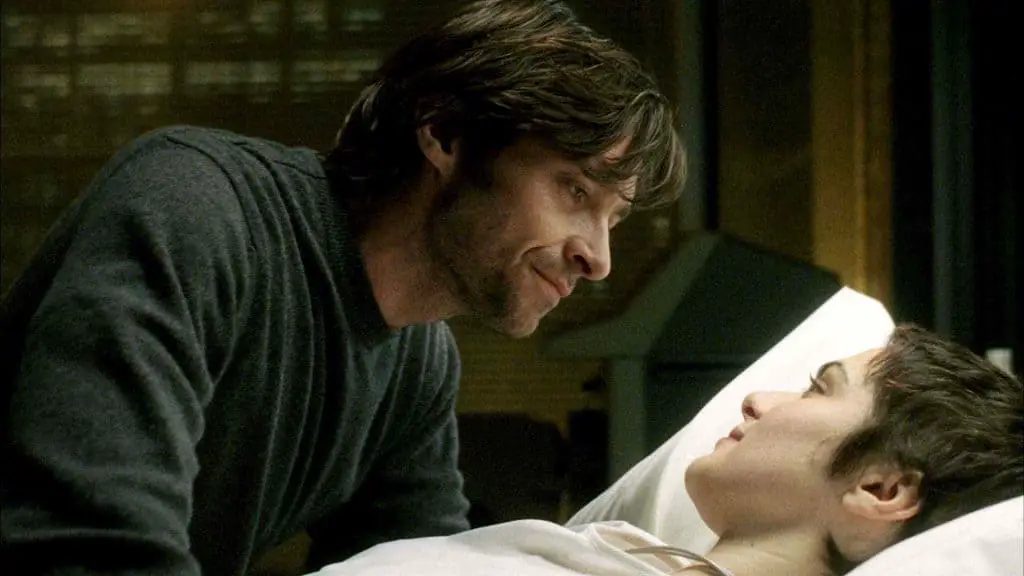
Izzy asks Tom to finish The Fountain because he knows it will lead him to unravel the mystery of immortality
Time plans in the film
The action in the film takes place in three timelines – or in three different universes. You can interpret the relationship of plot lines in different ways – I will focus on two explanations that are closest to my own point of view. If you have your own version, then you can stick to it – the only correct interpretation does not exist (well, if it does exist, then only in the head of the genius Aronofsky, where you and I cannot get through).
The first option is as follows: the story with Spain takes place in the historical past, and it is she who launches the entire chain of further events. Queen Isabella instructs the conquistador Thomas to discover the source of eternal life and promises him eternal love. Thomas finds the Tree of Life, but turns out to be unworthy to live forever – however, after death he is reborn again and again, until he finally understands the secret of true immortality (what happened to the queen, one can only guess, but we must assume that she soon followed the conquistador). The love story of Tom and Izzy in the present is a continuation of the story after the lovers were reborn once again. Izzy’s book thus describes their past life. Tom buries the seeds at Izzy’s grave and Izzy becomes the Tree of Life. Finally, the future is the story of the enlightened Tom and the Tree of Life.
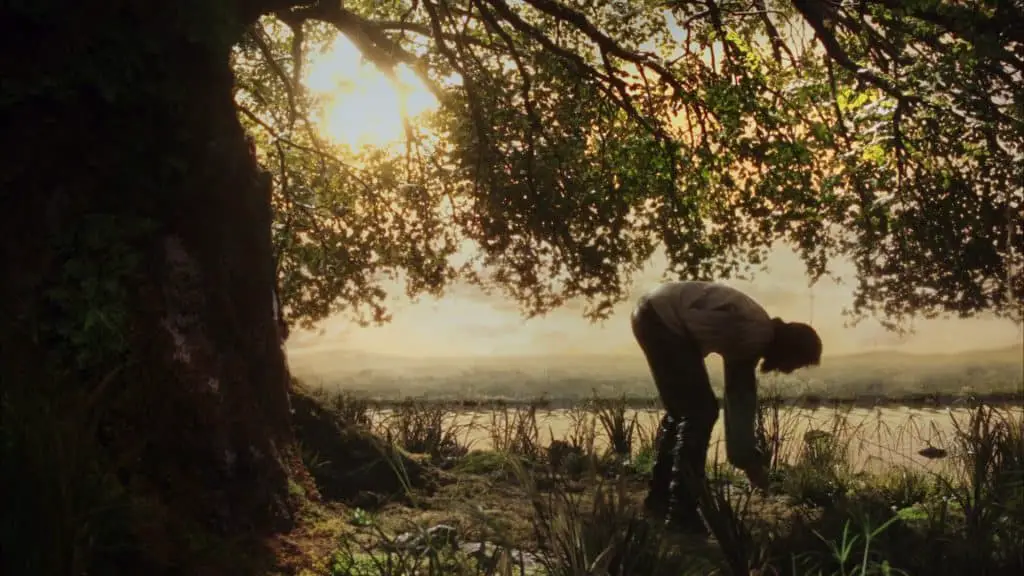
The conquistador dies without receiving the desired immortality, because he is not worthy of it
I like the second version more, because, in my opinion, it is impossible to arrange the events of different plot lines in one chronological chain without inconsistencies. All three realities are parallel to each other, and the laws and time are different in each. But at the same time, events in one reality can affect what happens in another. One reality – real, real, everyday, “ours” is the universe of Tom and Izzy, dominated by science and the Western way of thinking, which is carried by Tom. Another reality is artistic, it is a fictional world that Izzy described in her book “The Fountain”. Religion dominates here – both the Inquisitor and Queen Isabella obey religious dogmas, but interpret them in different ways. Izzy needs this fictional universe to explain to Tom his point of view on life and death. And the third reality is timeless, where that elusive Eastern wisdom reigns, which cannot be equated with the spiritual, but cannot be reduced to the rational. It is a metaphor for Tom’s inner growth and his path to accepting death – and immortality at the same time.
Significant images and details in the film “The Fountain”
The meaning of the name of the protagonist
The name of the main character – Tom – goes back to the biblical name of Thomas (yes, in English the apostle is called Thomas ). The apostle Thomas distinguished himself by not believing in the resurrection of Jesus from the dead, so the son of God had to condescend to provide material evidence (namely, nail wounds) to the doubting apostle. The expression “Unbeliever Thomas” goes back precisely to this biblical story. In the film, Tom also appears as “unbeliever” – he denies the fact that Izzy is dead, tries to revive her, despite the assurances of the doctors. He does not want to accept death as such – he tries to fight it. And here is the name of Tom Creo ( Creo) is translated from Spanish as “I believe.” Thus, in the name of the hero, as in a capsule, the plot of the film is compressed to the limit. From disbelief, rejection of the concept of death – to belief in eternal life, but not in the everyday understanding that the earthly Thomas Creo had, but in a deeper, Buddhist sense.
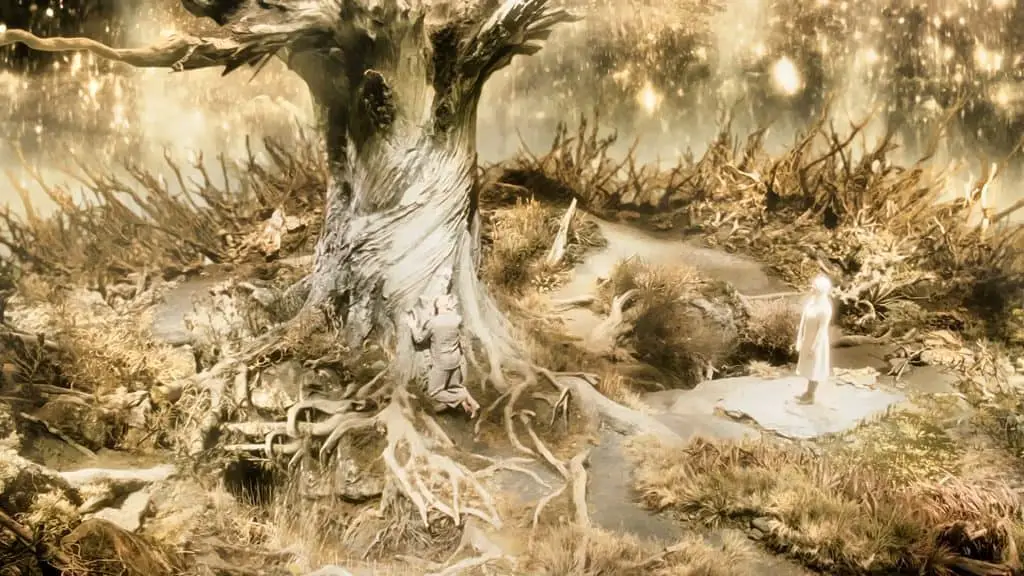
As you approach Xibalba, the screen fills with bright light.
Loops and rings
A circle, a ring is one of the key symbols in Eastern philosophy, almost all-encompassing. The circle means the fundamental absence of beginning and end, past and future. The circle is a metaphor for the relationship of all living things, everything that exists in the Universe. In the film, circles and rings appear all the time – let’s find all the manifestations of this metaphor in “Fountain”:
- The cyclical nature of time. All stories unfold in different temporal and spatial planes, but nevertheless, in a paradoxical way, they are closed in a circle. The Indian leader recognizes in Tom-Conquistador the first ancestor, the forefather – but the same turns out to be the last person on Earth, his death starts the process of the regeneration of the Earth and humanity.
- The cycle of life and death. Life is impossible without death, and death without life. After death, people become trees, and the tree gives life and health to people. Izzy, inspired by the story of her Indian guide, explains to Tom that after death a part of us continues to live in plants and birds, in earth and water – and this is not just a beautiful metaphor, because the atoms that make up our bodies really continue their cycle among others atoms in the universe.
- Annual rings. Tom, left alone with the Tree, puts numerous ring tattoos on his hands, which indicate the number of years lived (or maybe centuries or millennia). This symbolizes its unity with the Tree of Life, and how many years the tree itself has lived – we can only guess.
- Wedding ring. Tom loses his wedding ring in the laboratory – a bad omen, and in the film her omen really comes true – Izzy dies. For Tom, the ring has a sacred meaning, this can be understood from the difficult scene after the death of Izzy, when Tom makes himself an impromptu tattoo on the place where the trace of the wedding ring remained.
Moving from darkness to light
If we consider the universe of the film chronologically, then we can see that the past (the history of the Conquistador) is painted in dark, gloomy tones, there is almost no sunlight in it; the present (the story of Tom and Izzy) is much lighter, but still the colors are muted, there is little light in the laboratory; and finally the future (Tom and the Tree of Life) is flooded with light.
The final point – Tom’s immersion in Xibalba – is simply striking in its brightness. Aronofsky tried to depict the death of a star – perhaps now the special effects used do not seem very convincing, but he did not regret the colors and light, and the fiery golden Xibalba still captures the imagination of the audience.
